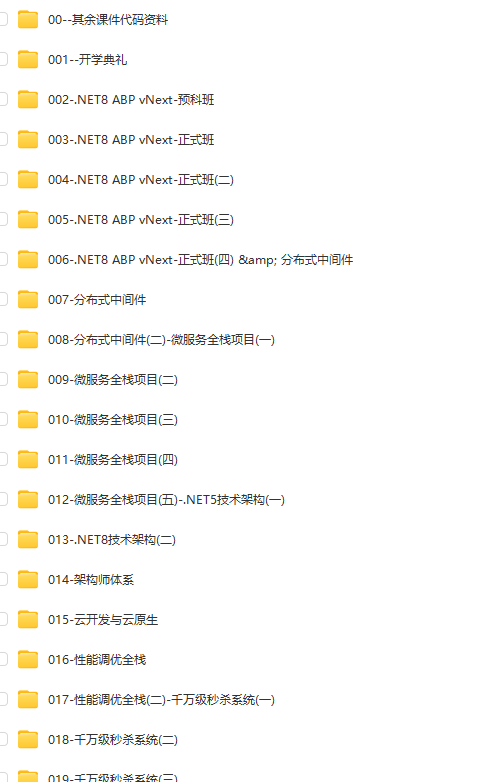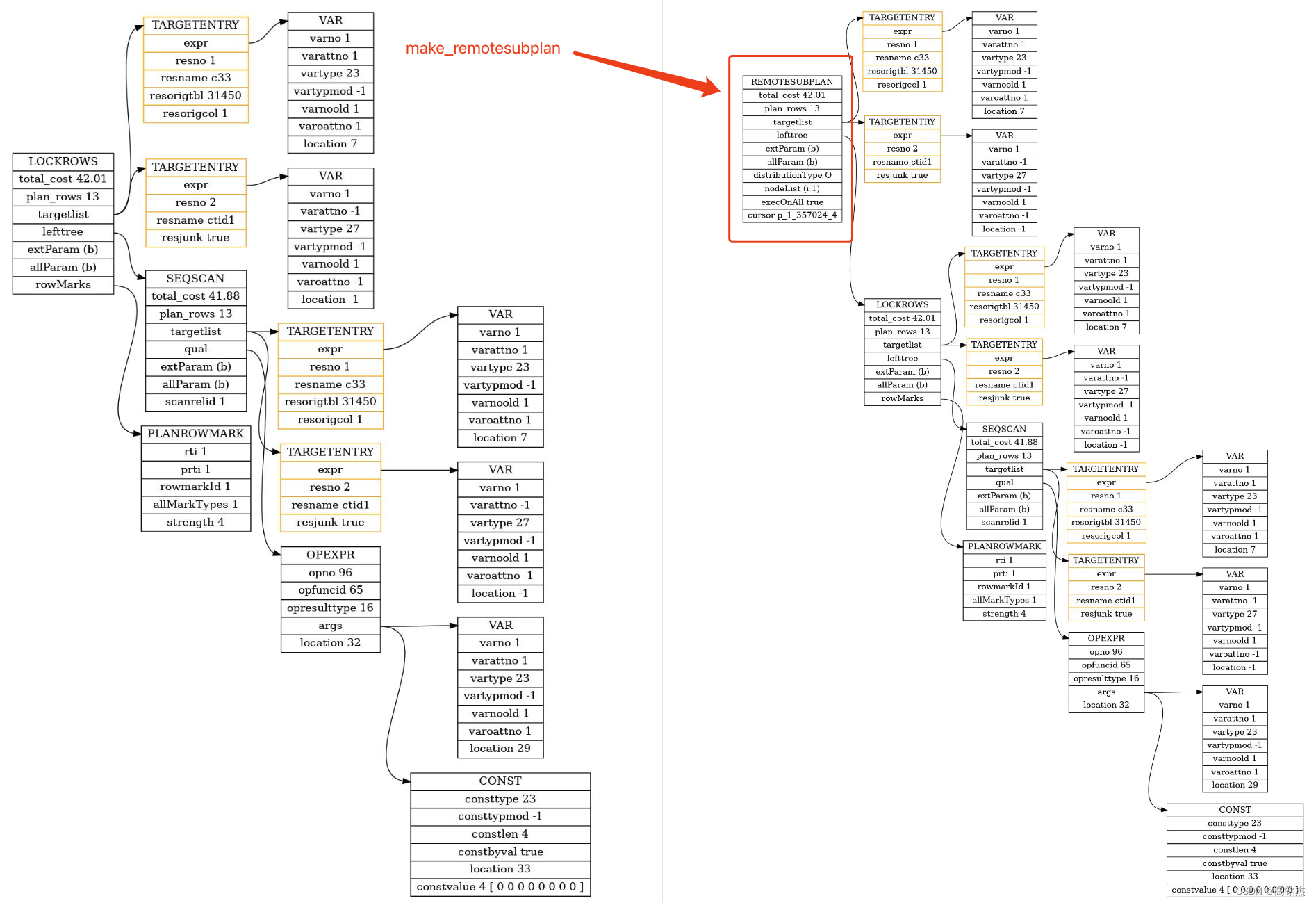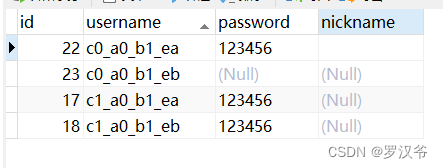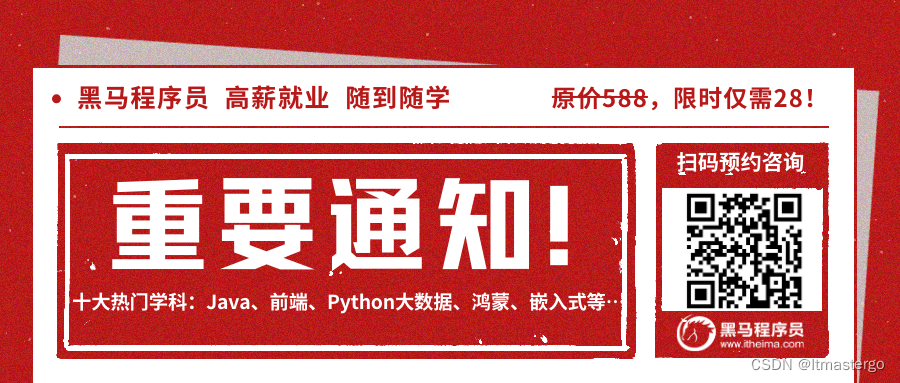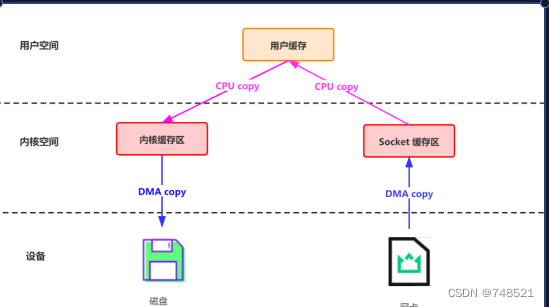测试管理_利用python连接禅道数据库并统计bug数据到钉钉
这篇不多赘述,直接上代码文件。
另文章基础参考博文:参考博文
加以我自己的需求优化而成。
统计的前提
以下代码统计的前提是禅道的提bug流程应规范化
- bug未解决不删除
- bug未关闭不删除
db_config.py
连接数据库的操作
#coding=utf-8
#!/usr/bin/python3
class mysql_config():
'''def __init__(self,name):
#print 'aaaa'
self.name = name
print name
'''
def get_config(self, name):#建立一个配置,后续通过这个配置和数据库建立连接,创建游标
self.name = name
config = {
'zentao': {
'host': '192.****.****.*',
'user': '****',
'passwd': '',
'db': 'zentao',
'port': ****,
'charset': 'utf8' # 这里是解决中文乱码情况
},
}
return config[name]
mysql.py
连接禅道数据库并统计的操作
#coding=utf-8
#!/usr/bin/python3
#import MySQLdb
import re
import pymysql
import datetime
from db_config import mysql_config
m_config = mysql_config()#实例化mysql_config类
class db_mysql():
def __init__(self):
print('class:db_mysql -import -true')
# 离职人员u.deleted=1
# 连接mysql
def connect(self, name):
# self.sql = sql
self.name = name
config = m_config.get_config(name) # 引用配置的获取链接方法
db = pymysql.connect(**config)#建立连接
cursor = db.cursor()#建立游标
return cursor
# 执行Sql语句
def execute(self, cursor, sql):
cursor.execute(sql)
return cursor
# 获取全部结果
def fetchall(self, cursor):
data = cursor.fetchall()
# print("获取所有结果fetchall:"+data)
return data
# 获取一个结果
def fetchone(self, cursor):
data1=cursor.fetchone()
# print("获取单个结果fetchall:" + data1)
return data1
# 查询bug汇总(年度)就只统计个总数,总新增bug总数包含已关闭的
# 本年度新增bug总情况,如效果图1
def bug_total(self, cursor, now,begin_day,total_day):
"""
最近总的BUG情况统计统计
:param: day 根据输入天数
:return:
"""
#在"%s" and "%s"期间 新增bug数
new_near_bug_sql = """SELECT COUNT(*) as new_near_bug from zt_bug where openedDate between "%s" and "%s" and deleted='0';""" % (begin_day, now)
cursor.execute(new_near_bug_sql)
new_near_bug = cursor.fetchone()
# print("新增bug数")
# print(new_near_bug)
# 在"%s" and "%s"期间已解决bug数
close_bug_sql = """SELECT COUNT(*) as close_bug from zt_bug where status = "closed" and openedDate between "%s" and "%s" and deleted='0';""" % (begin_day, now)#"%s"表示这里将被替换成一个新的字符串,依次为recent_sevenday, now
cursor.execute(close_bug_sql)
close_bug = cursor.fetchone()
# print("已解决bug数")
# print(close_bug)
# 在"%s" and "%s"期间未解决bug数
open_bug_sql = """SELECT COUNT(*) as open_bug from zt_bug where status = "active" and openedDate between "%s" and "%s" and deleted='0';""" % (begin_day, now)
cursor.execute(open_bug_sql)
open_bug = cursor.fetchone()
# print("没解决bug数",)
# print(open_bug)
# 在"%s" and "%s"期间已解决待验证bug数
close_unbug_sql = """SELECT COUNT(*) as close_unbug from zt_bug where status = "resolved" and openedDate between "%s" and "%s" and deleted='0';""" % (begin_day, now)
cursor.execute(close_unbug_sql)
close_unbug = cursor.fetchone()
# print("已解决待验证bug数", )
# print(close_unbug)
# 在"%s" and "%s"期间,研发人员发生bug数排行。条件:时间,不剔除已删除的bug,如效果图3
dev_bug_sql = """SELECT COUNT(*) num,realname FROM zt_bug b INNER JOIN zt_user u ON u.account = b.resolvedBy
WHERE DATE_FORMAT(b.openedDate, '%%Y-%%m-%%d') between '%s' and '%s'
AND u.deleted='0' AND u.role='dev'
GROUP BY b.resolvedBy ORDER BY num DESC;""" % (total_day, now)
cursor.execute(dev_bug_sql)
dev_bug = cursor.fetchall()
print("研发人员发生bug数降序排行", )
# print(dev_bug)
add_str_dev_bug = '' # 空字符串
#让降序排行一行一人
for _tuple in dev_bug:
a = ' \n \n {0}'.format(
_tuple)
add_str_dev_bug += str(a)
# print(add_str_dev_bug)
# 在"%s" and "%s"期间研发人员BUG被激活次数(非一次性修复),不剔除已删除的bug,如效果图4
activation_bug_sql = """SELECT SUM(激活次数) 激活次数,中文姓名 FROM (SELECT b.id,COUNT(*) 激活次数,u.realname 中文姓名 FROM
zt_bug b INNER JOIN zt_action a ON a.objectID = b.id INNER JOIN zt_user u ON u.account = b.resolvedBy
WHERE DATE_FORMAT(b.openedDate, '%%Y-%%m-%%d') between "%s" and "%s" AND a.objectType = 'bug' AND a.action = 'activated'
AND u.deleted='0' and u.role='dev'
GROUP BY b.id ORDER BY 激活次数 DESC) tem GROUP BY tem.中文姓名 ORDER BY 激活次数 DESC;""" % (total_day, now)
cursor.execute(activation_bug_sql)
activation_bug = cursor.fetchall()
print("研发人员BUG被激活次数(非一次性修复)", )
print(activation_bug)
add_str_activation_bug = '' # 空字符串
#让降序排行一行一人
for _tuple in activation_bug:
a = ' \n \n {0}'.format(
_tuple)
#(Decimal('19')中的(Decimal('')去掉
a = re.sub('[(Decimal('')]', '', a)
# print(a)
add_str_activation_bug += str(a)
# print("拆开元组,研发人员BUG被激活次数(非一次性修复)", )
# print(add_str_activation_bug)
# 提BUG、指派、转派【已解决待验证】、改BUG,=====================\n\n研发人员BUG被激活次数(非一次性修复):{5}\n\n
statistics_bug = "本年度新增bug总情况({6}~{7}) \n\n 新增BUG数:{0} \n\n 未关闭BUG数:{1} \n\n 已关闭BUG数:{2} \n\n 已解决待验证BUG数:{3}\n\n =====================\n\n研发人员今年(2023)BUG数倒序:\n\n{4}\n\n =====================\n\n研发人员今年BUG被激活次数(非一次性修复):\n\n{5}\n\n".format(
new_near_bug[0], open_bug[0], close_bug[0], close_unbug[0], add_str_dev_bug, add_str_activation_bug, total_day, now)
# print("bug的统计汇总:"+statistics_bug)
return statistics_bug
# 查询bug汇总(本周),就只统计个总数,总新增bug总数包含已关闭的
# 本周新增bug总情况
def bug_total_week(self, cursor, begin_day, now):
"""
最近总的BUG情况统计统计
:param: day 根据输入天数
:return:
"""
# 在"%s" and "%s"期间新增bug数
new_near_bug_sql = """SELECT COUNT(*) as new_near_bug from zt_bug where openedDate between "%s" and "%s" and deleted='0';""" % (
begin_day, now)
cursor.execute(new_near_bug_sql)
new_near_bug = cursor.fetchone()
# print("新增bug数")
# print(new_near_bug)
# 在"%s" and "%s"期间已解决bug数
close_bug_sql = """SELECT COUNT(*) as close_bug from zt_bug where status = "closed" and openedDate between "%s" and "%s" and deleted='0';""" % (
begin_day, now) # "%s"表示这里将被替换成一个新的字符串,依次为recent_sevenday, now
cursor.execute(close_bug_sql)
close_bug = cursor.fetchone()
# print("已解决bug数")
# print(close_bug)
# 在"%s" and "%s"期间未解决bug数
open_bug_sql = """SELECT COUNT(*) as open_bug from zt_bug where status = "active" and openedDate between "%s" and "%s" and deleted='0';""" % (
begin_day, now)
cursor.execute(open_bug_sql)
open_bug = cursor.fetchone()
# print("没解决bug数",)
# print(open_bug)
# 在"%s" and "%s"期间已解决待验证bug数
close_unbug_sql = """SELECT COUNT(*) as close_unbug from zt_bug where status = "resolved" and openedDate between "%s" and "%s" and deleted='0';""" % (
begin_day, now)
cursor.execute(close_unbug_sql)
close_unbug = cursor.fetchone()
# print("已解决待验证bug数", )
# print(close_unbug)
# 提BUG、指派、转派、改BUG,=====================\n\n研发人员BUG被激活次数(非一次性修复):{5}\n\n
# print("bug的统计汇总:"+statistics_bug)
statistics_bug_week = "=====================\n\n本周新增bug总情况({4}~{5}) \n\n 新增BUG数:{0} \n\n 未关闭BUG数:{1} \n\n 已关闭BUG数:{2} \n\n 已解决待验证BUG数:{3}\n\n =====================\n\n".format(
new_near_bug[0], open_bug[0], close_bug[0], close_unbug[0], begin_day, now)
return statistics_bug_week
# 查询bug明细,具体以人为维度,统计每个人的bug明细,以年为维度
def bug_detail_year(self, cursor, this_year, now):
"""
包含姓名的年度明细
最近总的BUG情况统计明细数据
:param: day 根据输入天数
:return:
"""
cursor.execute(
"""select "%s" as 开始时间 ,"%s" as 结束时间,u.realname as 姓名 ,count(*) as 总bug数, sum(case when b.status="active" then 1 else 0 end) as 未解决bug数 from zt_bug b left join zt_user u on b.assignedTo = u.account AND u.deleted='0' and u.role='dev' where b.deleted='0' AND b.status and b.openedDate BETWEEN "%s" and "%s" group by b.assignedTo order by 未解决bug数 desc;""" % (
this_year, now, this_year, now))
data = cursor.fetchall() # 把sql执行的结果赋值给data,data的格式为元组,元组套元组
data2 = data[1:] # 取除列表第一个外的其他数据
# print(data2)
add_str_year = '' # 空字符串
for _tuple in data2:
# print("_tuple:"+str(_tuple))
if _tuple[2] is None:
print("姓名为空不输出")
elif _tuple[4]==0:
print("累计未解决等于0,不输出")
else:
a = '\n \n 姓名:{0},累计未解决bug数:{1}'.format(_tuple[2], _tuple[4])
add_str_year += a
add_str_year="\n \n =====================\n \n历史遗留:未解决bug数统计 "+add_str_year
# add_str_1="以下是研发人员现存bug统计明细 \n \n"+add_str
# print("add_str--year,bug明细:" + add_str_year)
return cursor, add_str_year
# 查询bug明细,具体以人为维度,统计每个人的bug明细,如效果图2
def bug_detail(self, cursor, recent_sevenday,now):
"""
本周的带姓名明细
最近总的BUG情况统计明细数据
:param: day 根据输入天数
:return:
"""
db = db_mysql()
cursor.execute(
"""select "%s" as 开始时间 ,"%s" as 结束时间,u.realname as 姓名 ,count(*) as 总bug数, sum(case when b.status="active" then 1 else 0 end) as 未解决bug数,sum(case when b.status="resolved" then 1 else 0 end) as 已解决待验证bug数,sum(case when b.status="closed" then 1 else 0 end) as 已解决bug数 from zt_bug b left join zt_user u on b.assignedTo = u.account AND u.deleted='0' where b.deleted='0' AND b.status and b.openedDate BETWEEN "%s" and "%s" group by b.assignedTo order by 总bug数 desc;""" % (
recent_sevenday, now, recent_sevenday, now))
data = cursor.fetchall()#把sql执行的结果赋值给data,data的格式为元组,元组套元组
# data2=data[1:]
# print(data2)
add_str = ''#空字符串
for _tuple in data:
# print("_tuple:"+str(_tuple))
if _tuple[2] is None:
print("空值不输出")
else:
name = _tuple[2]
a = '\n \n =====================\n \n 姓名:{2}\n \n开始时间:{0}\n \n结束时间:{1}\n \n总bug数:{3}\n \n未解决bug数:{4}\n \n已解决待验证bug数:{5}\n \n'.format(
_tuple[0], _tuple[1], name, _tuple[3], _tuple[4],_tuple[5]
)
add_str += a
# add_str=add_str+db.bug_detail_year(db.connect('zentao'), "2018-01-01", "2023-04-13")[1]+a
# add_str_1="以下是研发人员现存bug统计明细 \n \n"+add_str
print("add_str:"+add_str)
return cursor, add_str
#统计bug明细详情title
def bug_detail_title_delay(self, cursor, now):
"""
包含姓名的年度明细,bug明细详情,bug标题
最近总的BUG情况统计明细数据
:param: day 根据输入天数
:return:
"""
cursor.execute(
"""SELECT u.realname as 姓名 ,b.title AS 已延期bug标题
FROM zt_bug b left join zt_user u on b.assignedTo = u.account WHERE DATEDIFF(b.deadline,"%s")
<=0 and b.status="active" and u.deleted="0" and u.role="dev" and b.deleted="0";"""% (now))
data = cursor.fetchall() # 把sql执行的结果赋值给data,data的格式为元组,元组套元组
# # data2 = data[1:] # 取除列表第一个外的其他数据
data2 = data[0:]
print(data2)
add_str_year = '' # 空字符串
for _tuple in data2:
print("_tuple:"+str(_tuple))
a = '\n \n 姓名:{0},bug标题:{1} \n '.format(_tuple[0], _tuple[1])
add_str_year += a
add_str_year="\n \n =====================\n \n =====================\n \n =====================\n \n 延期未处理bug明细如下: "+add_str_year
print(add_str_year)
return add_str_year
# 统计延期bug明细详情title
def bug_detail_title_year(self, cursor, this_year, now):
"""
包含姓名的年度明细,bug明细详情,bug标题
最近总的BUG情况统计明细数据
:param: day 根据输入天数
:return:
"""
cursor.execute(
"""select "%s" as 开始时间 ,"%s" as 结束时间,u.realname as 姓名 ,b.title AS bug标题 from zt_bug b left join zt_user u on b.assignedTo = u.account where u.deleted='0' AND b.deleted='0' AND b.`status`='active'
and b.openedDate BETWEEN "%s" and "%s" order by 姓名 desc;""" % (
this_year, now,
# now,
this_year, now))
# '''
data = cursor.fetchall() # 把sql执行的结果赋值给data,data的格式为元组,元组套元组
# # data2 = data[1:] # 取除列表第一个外的其他数据
data2 = data[0:]
# print("data2~~~")
# print(data2)
add_str_year = '' # 空字符串
for _tuple in data2:
print("_tuple:" + str(_tuple))
if _tuple[2] is None:
print("姓名为空不输出")
# elif _tuple[4]==0:
# print("累计未解决等于0,不输出")
else:
# # a = '\n \n 姓名:{0},累计未解决bug数:{1}'.format(_tuple[2], _tuple[4])
a = '\n \n \n \n 姓名:{0},标题:{1}'.format(_tuple[2], _tuple[3])
#
add_str_year += a
add_str_year = "\n \n =====================\n \n历史遗留:bug明细 " + add_str_year
# add_str_1="以下是研发人员现存bug统计明细 \n \n"+add_str
print("add_str--year:" + add_str_year)
print("历史bug_title" + str(data))
return add_str_year
#关于年度未解决bug数的html表,效果如下图:点击查看历史遗留bug详情效
def bug_detail_title_year2(self, cursor, this_year, now):
"""
包含姓名的年度明细,bug明细详情,bug标题
最近总的BUG情况统计明细数据
:param: day 根据输入天数
:return:
"""
cursor.execute(
"""
select p.name AS 项目名称 ,"%s" as 开始时间 ,"%s" as 结束时间,u.realname as 姓名 ,b.title AS bug标题,b.id AS bug_id
from zt_bug b
left join zt_user u on b.assignedTo = u.account
left join zt_project p on p.id = b.project
where u.deleted='0' AND b.deleted='0' AND b.`status`='active'
and b.openedDate BETWEEN "%s" and "%s" order by 姓名 desc;
"""
% (
this_year, now,
# now,
this_year, now))
data = cursor.fetchall()
return data
# 关于延期未解决bug数的html表
def bug_delay_bug_year(self, cursor, now):
"""
包含姓名的年度明细,bug明细详情,bug标题
最近总的BUG情况统计明细数据
:param: day 根据输入天数
:return:
"""
cursor.execute(
"""
SELECT p.name AS 项目名称 ,u.realname as 姓名 ,b.title AS 已延期bug标题, b.keywords AS 原因
FROM zt_bug b left join zt_user u on b.assignedTo = u.account
left join zt_project p on p.id = b.project
WHERE DATEDIFF(b.deadline,"%s") <=0 and b.status="active" and u.deleted="0"
and u.role="dev" and b.deleted="0" group by 已延期bug标题 order by 项目名称 desc;
"""% (now))
data = cursor.fetchall()
return data
#以下为加入参数测试上述sql统计
now = datetime.datetime.now().strftime("%Y-%m-%d")
db=db_mysql()
# db.bug_detail_year(db.connect('zentao'), "2020-04-07", "2023-08-25")
#禅道bug标题明细
# db.bug_detail_title_year(db.connect('zentao'), "2023-01-01", now)
#禅道延期bug明细
# db.bug_detail_title_delay(db.connect('zentao'), now)
# db.bug_detail(db.connect('zentao'), "2023-09-18", "2023-09-25")
# db.bug_total(db.connect('zentao'),now,"2023-01-01", "2023-01-01")
一周统计

每个开发维度的统计

所有开发bug总数的倒序

所有开发bug激活数的倒序

dingtalk.py
统计结果发送到钉钉的操作
#coding=utf-8
#!/usr/bin/python3
import json
import urllib.request
import datetime
from dingtalkchatbot.chatbot import DingtalkChatbot, FeedLink
class ding_talk():
def send_bug(self,url, data_file,sign_mark):#设置发送的信息样式,效果如下截图
'''
:param url: 钉钉机器人的webhook
:param data_file: 查看详情中的markdown信息
:param sign_mark: 用户而可以自定义为本周、还是本月的禅道BUG情况统计
:return:
'''
xiaoding = DingtalkChatbot(url)
# Markdown消息@所有人
now = datetime.datetime.now().strftime("%Y%m%d")
# print(now)
xiaoding.send_markdown(title='BUG统计%s' % (now),
text='**禅道BUG情况统计**\n\n 各位同事,以下是禅道BUG情况统计。统计结果供各组组长参考,烦请做好督促,尽快处理bug!\n\n=====================\n\n {0} \n\n[查看详情](http://192.****.****.*/zentao/html/bug_detail_{1}.html) \n'.format(
data_file,now), is_at_all=False)
def bug_html(self, lis, html_file):
"""
对查询bug明细转html文件
:param lis
:param html_file
"""
conten_title = []
for key in lis.description:
conten_title.append(key[0])
a = "</th><th>".join(conten_title)
con_title = "<tr><th>" + a + "</th></tr>"
conten_val = ""
con = ""
lis_arr = lis.fetchall()
for i in range(0, len(lis_arr)):
for index, v in enumerate(lis_arr[i]):
if index == 0:
conten_val = "<tr><td>" + lis_arr[i][index] + "</td><td>"
con = con + conten_val;
continue
con = con + str(lis_arr[i][index]) + "</td><td>"
con = con[0:-2] + "r>"
con = con + "\n"
head = """<meta charset="utf-8">
<style type="text/css">
table.tftable {font-size:12px;color:#333333;width:100%;border-width: 1px;border-color: #9dcc7a;border-collapse: collapse;}
table.tftable th {font-size:12px;background-color:#abd28e;border-width: 1px;padding: 8px;border-style: solid;border-color: #9dcc7a;text-align:left;}
table.tftable tr {background-color:#ffffff;}
table.tftable td {font-size:12px;border-width: 1px;padding: 8px;border-style: solid;border-color: #9dcc7a;}
</style>\n<table id="tfhover" class="tftable" border="1">\n"""
last = "</table>"
htm = head + con_title + con + last
with open(html_file, "w", encoding="utf-8") as f:
f.write(htm)
钉钉通知效果
禅道BUG情况统计
各位同事,以下是禅道BUG情况统计。统计结果供各组组长参考,烦请做好督促,尽快处理bug!
=====================
=====================
本周新增bug总情况(2023-01-28~2023-02-04)
新增BUG数:19
未关闭BUG数:1
已关闭BUG数:17
已解决待验证BUG数:1
=====================
本年度新增bug总情况(2023-01-01~2023-02-04)
新增BUG数:2231
未关闭BUG数:3
已关闭BUG数:2210
已解决待验证BUG数:18
=====================
研发人员今年(2023)BUG数倒序:
'27', '周**'
'24', '吴**'
'18', '郑**'
'12', '王**'
=====================
研发人员今年BUG被激活次数(非一次性修复):
'27', '周**'
'24', '吴**'
'18', '郑**'
'12', '王**'
=====================
姓名:周**
开始时间:2023-01-28
结束时间:2023-02-04
总bug数:1
未解决bug数:0
已解决待验证bug数:1
=====================
姓名:吴**
开始时间:2023-01-28
结束时间:2023-02-04
总bug数:1
未解决bug数:1
已解决待验证bug数:0
=====================
历史遗留:未解决bug数统计
姓名:吴**,累计未解决bug数:1
查看历史遗留bug详情
点击查看历史遗留bug详情效果如下

run.py
所有代码文件执行入口
#coding=utf-8
#!/usr/bin/python3
import datetime
from mysql import db_mysql
from dingtalk import ding_talk
ding_ding = ding_talk()
mysql_obj = db_mysql()
#获取时间:
now = datetime.datetime.now().strftime("%Y-%m-%d")
now1=(datetime.datetime.now() + datetime.timedelta(days=1)).strftime("%Y-%m-%d")#当前时间加一天,并展示为2023-01-01形式;如果只获取当前时间,则只统计到当前时间凌晨0点
print("~~~now1的,时间"+now1)
recent_sevenday = (datetime.datetime.now() - datetime.timedelta(days=7)).strftime("%Y-%m-%d")
print("~~~一周开始的时间"+recent_sevenday)
this_year = "2023-01-01"
print("~~~今年的时间"+this_year)
#bug明细写入html
cursor_connect = mysql_obj.connect('zentao')#先连接数据库
sign_mark="本周"
#因为bug_detail有两个返回值,所以要赋值给两个变量。如果只取一个就用索引recent_sevenday,
#查询延期未处理bug明细,姓名+标题
# add_str_delay = mysql_obj.bug_detail_title_delay(cursor_connect, now)
#查询本周bug明细,具体到每个人有多少未处理
cursor_execute, add_str = mysql_obj.bug_detail(cursor_connect, recent_sevenday, now)
#查询历史bug明细,只显示姓名和bug数
cursor_execute_year, add_str_year = mysql_obj.bug_detail_year(cursor_connect, "2015-01-01", now)
#以下详细的明细。统计开发人员未解决bug数,已关闭bug数,已解决待关闭bug数的统计时间,bug总数降序和bug被激活的时间,print("seven_count:"+seven_count)
seven_count = mysql_obj.bug_total(cursor_connect, now, this_year, this_year)#最近总的BUG情况统计,第一个是连接数据库;第二个是当日时间;
#以下简单的数量统计。统计本周新增bug总情况,print("seven_count_week:"+seven_count_week)
seven_count_week=mysql_obj.bug_total_week(cursor_connect, recent_sevenday, now)
#统计历史bug的标题明细
# 生成html
seven_count_title2 = mysql_obj.bug_detail_title_year2(cursor_connect, this_year, now)
# 不生成html + seven_count_title历史bug的标题明细
# seven_count_title = mysql_obj.bug_detail_title_year(cursor_connect, this_year, now)
#全部都展示出来
seven_count=seven_count_week + seven_count + add_str + add_str_year
# +add_str_delay+seven_count_title
#只展示
# seven_count=add_str_delay+add_str
#将统计生成的html放在windows的路径,如要换在服务器上,要换对应路径
# html = r"D:\03code\zentao -git版本 - 增加bug明细\test.html"
#将统计生成的html放在 服务器的指定路径,上传git版本
html = "/home/tomcat/tomcat7/webapps/test/bugdetail.html".format(now)
ding_ding.bug_html2(seven_count_title2, html)
print("run_week的输出~~~~~~~~~~~~~~~~~~~~"+seven_count)
#测试组1
# url="https://oapi.dingtalk.com/robot/send?access_token=****"
#研发组
url="https://oapi.dingtalk.com/robot/send?access_token=****"
ding_ding.send_bug(url, seven_count, sign_mark)#ding_talk的send_bug方法,发送send_markdown;def send_bug(self,url, data_file,sign_mark)
# +add_str_delay+seven_count_title
#只展示
# seven_count=add_str_delay+add_str
#将统计生成的html放在windows的路径,如要换在服务器上,要换对应路径
# html = r"D:\03code\zentao -git版本 - 增加bug明细\test.html"
#将统计生成的html放在 服务器的指定路径,上传git版本
html = "/home/tomcat/tomcat7/webapps/test/bugdetail.html".format(now)
ding_ding.bug_html2(seven_count_title2, html)
print("run_week的输出~~~~~~~~~~~~~~~~~~~~"+seven_count)
#测试组1
# url="https://oapi.dingtalk.com/robot/send?access_token=****"
#研发组
url="https://oapi.dingtalk.com/robot/send?access_token=****"
ding_ding.send_bug(url, seven_count, sign_mark)#ding_talk的send_bug方法,发送send_markdown;def send_bug(self,url, data_file,sign_mark)


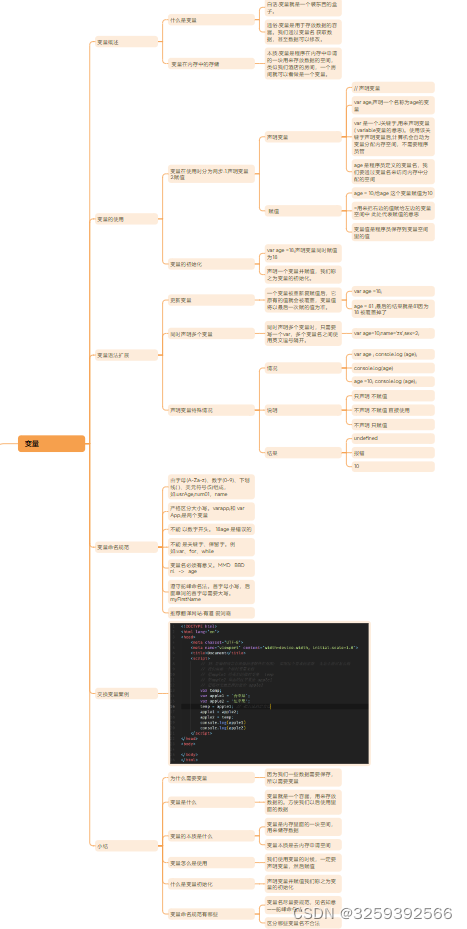
![[数据集][目标检测]喝水检测数据集VOC+YOLO格式995张3类别](https://img-blog.csdnimg.cn/direct/e556c45e72e74096838932592675af64.png)

